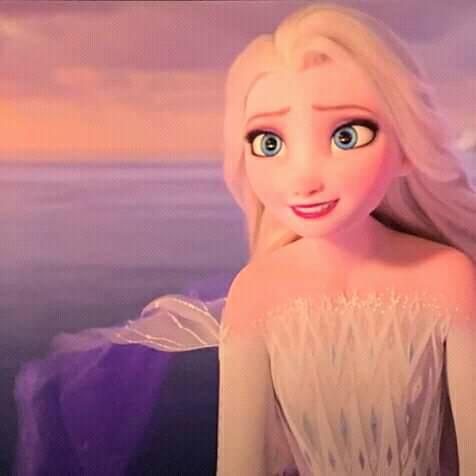“But that the dead are raised, Moses showed in the account of the (burning) bush…God is not a God of the dead, but of the living, for all live to him” – Jesus Christ
“Water has memory” – Olaf, Frozen 2
“I think there are some really spiritual, sort-of existential, themes about it that I think the grown-ups will appreciate” – Idina Menzel (a.k.a. “Queen Elsa of Arendelle”) on Frozen 2.
Pieta Iconography In Frozen 2. Compare With Michelangelo Original Below
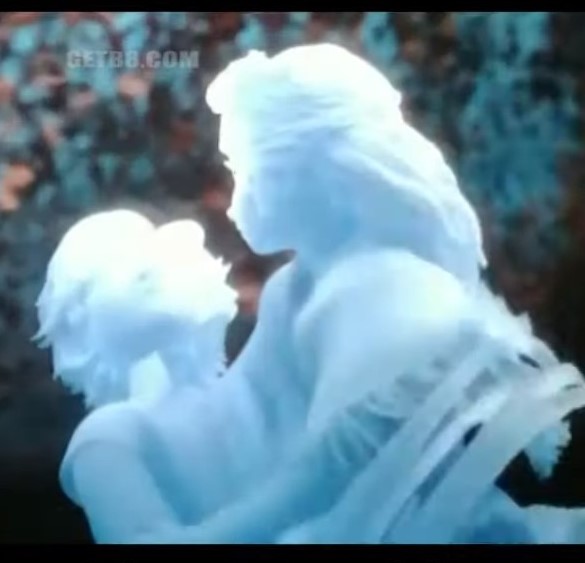

I. Into the Mythopoeic
Critics who say that Frozen 2 is nothing more than a money-grab, direct-to-video sequel with a big budget apparently have no palate for the mythopoeic.
So, what is “the mythopoeic?” And how is Frozen 2 an example of it?
First, let’s look at the term and its origins.
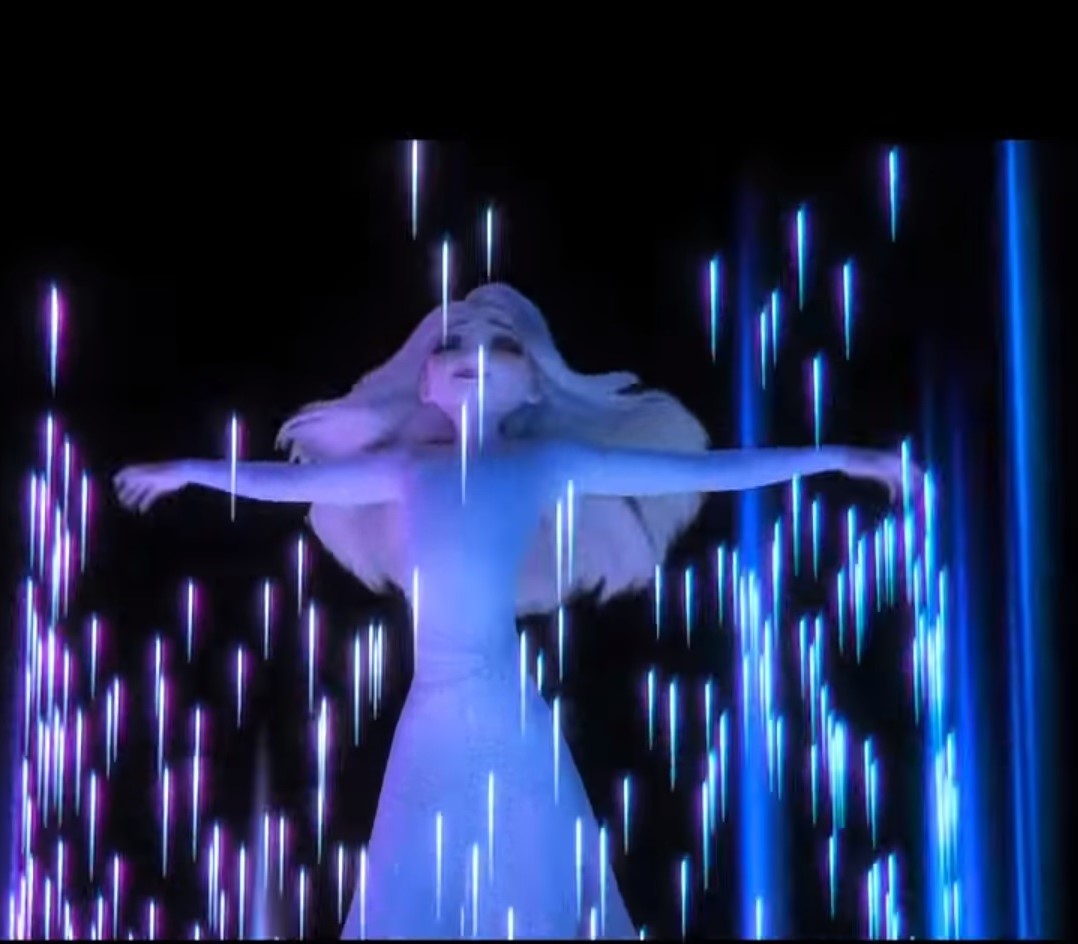
The word was developed from J.R.R. Tolkien’s title of his poem “Mythopoeia” which lays out his thoughts on the topic in verse. It evolved into a literary term that, among other things, can mean an author’s own created mythology, though perhaps one drawing from the treasury of traditional myth.
More than that, the best mythopoeic work will vicariously satisfy human yearnings we possess for things that are outside of human experience. Tolkien, again, holds forth on this, this time in his essay “On Fairy Stories.”
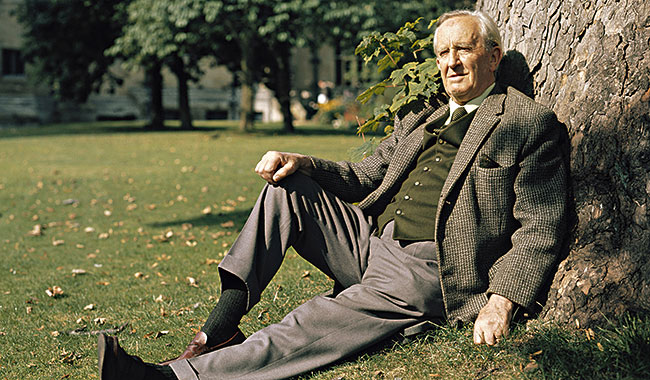
His friend and colleague C. S. Lewis described what is transmitted through the mythopoeic as “the echo of a tune we have not heard, news from a country we have never yet visited…”
…which is exactly the plot spring of Frozen 2. Elsa hears an unearthly tune that unsettles her and which she initially resists. However, her longing has been awakened for the “news from a country (she) has never yet visited.”
She, along with the regular gang of Anna, Kristoff, and Olaf, follows that tune into that country, in this case, an enchanted forest…and into the unknown.
It is the beginning of a conversion experience on multiple levels.
II. An Epic of Biblical Proportions
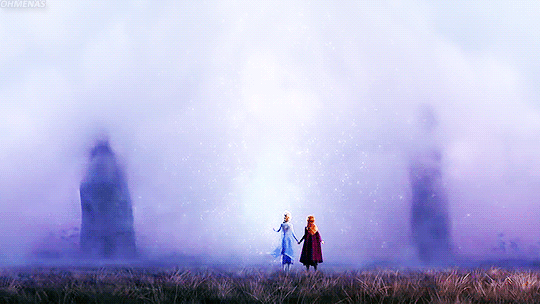
Frozen 2 is an epic tale of redemption. It is epic by definition because it deals with the fate of a people, two in fact. The redemptive element here transcends Elsa’s personal salvation through the death and resurrection of her sister on her behalf in the previous film (see my blog entry “Why Everyone Is Wrong About Frozen” – Part One).
Now redemption must extend to Queen Elsa’s people who are under penalty of destruction because of the transgression of their nation’s patriarch, King Runeard. Anna and Elsa’s grandfather’s refusal to accept any authority other than his own has even disrupted the created order itself.
Because of his betrayal, the lives of the Northuldra people, who have lived in Eden-like harmony with the spirits of an enchanted forest, is blighted. Blood is shed on both sides, and, in judgement from the spirits, a fog cuts the enchanted forest off from the rest of the world, effectively exiling the Northuldra within their own world.
As the federal head of his own people, Runeard’s treachery places all Arendelle under judgement. But…because of an act of mercy by one of the Northuldra to an enemy, hope is introduced into this tragic scenario by the forest’s spirits.
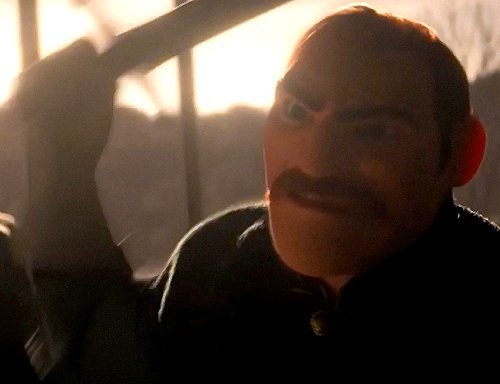
If judgement has fallen because of the actions of a patriarch, redemption will come through a matriarch, a Northuldra girl of one of their “oldest families.”
To save the evil Runeard’s son, she voluntarily abandons her own home. Given her pedigree, her life with the Northuldra was probably one of privilege. Now she humbles herself to the status of commoner and throws her lot in with the prince in his world.
This is Iduna, who will grow up to marry this boy, the future King Agnar, and give birth to Elsa and Anna. It will be Iduna’s female offspring who work out the redemption of both Arendelle and the Northuldra. One might say their salvation will be accomplished by “the seed of the woman.”

The parallels with the Biblical story of human and cosmic redemption continue and become stronger throughout Frozen 2. But it is not allegory; like the fiction of Tolkien and Lewis, Frozen 2 is mythopoeic. It draws not only from Biblical myth, but also Scandinavian with some Celtic thrown in, and mixes these with its own.
Just to clarify: because a story is a myth doesn’t require that it not be real. At its most basic, a myth is a story that explains why things are like they are, both in nature and in “the nature of things.” It was the “myth becomes fact” argument regarding Jesus that went a long way in C.S. Lewis’ conversion from atheist to Christian.
III. Let It Go…or To Not Let It Go. That Is the Question.
Mythopoeic stories are not allegories but can be, in some aspects, allegorical. Thus, characters are free to be themselves, as it were, and are not bound to be exact parallels.
As church historian and film scholar Rod Bennett has pointed out in his analysis of, yes, Darth Vader as a Christ figure, even the non-fiction Christ types of the Old Testament were flawed, even sinful. (One is tempted to say that they were not immaculate, neither in conception nor action.).
In the Frozen movies, both Elsa and Anna are also flawed redemptive figures, having inherited their progenitor King Runeard’s “original sin.” Like him, they have both been controlled by a desperate fear of loss of control, Elsa especially in Frozen and Anna especially in Frozen 2.
Again, as I argued in my previous Frozen blog, Elsa can belt out she is letting it go all she wants, but even with all the power the pipes of Idina Menzel have to offer, this is a cry of defiant self-will which is an act of holding on, not letting go.
However, among the coded messages placed in the childhood lullaby of their mother Iduna is the paradoxical admonition that “when all is lost, then all is found.”
Or, if you will, “he who seeks to gain his life will lose it, but he loses his life for my sake will find it” (Matthew 16:25). “I am found!” Elsa, one of the film’s two Christ figures, cries out in ecstasy when this truth becomes reality for her in the climactic “Show Yourself” sequence of Frozen 2.
IV. “The Redeemer Heroines”: Elsa
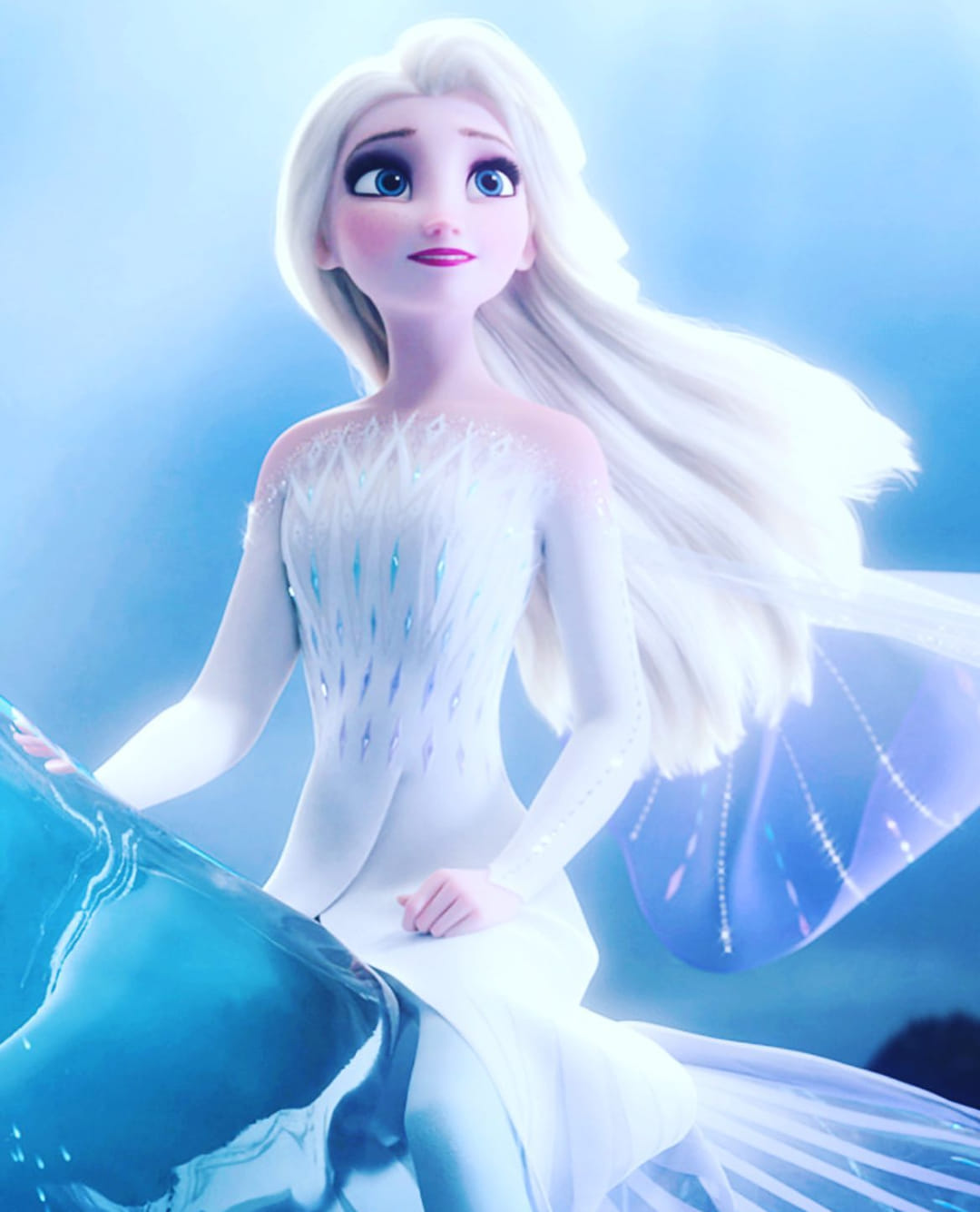
Elsa has answered the call, literally, but she cannot accomplish her mission on her own. She will need her complement, who, as always, is her sister.
While Elsa will go through her share of trials, she will also know transcendence, power, and become the agent of grace. To Anna will fall only the harder tasks of the redemptive process without which the other half cannot be accomplished: Gethsemane and the unleashing of righteous judgement.
The Frozen creators see these two films as one story. In this context, we now learn that Elsa’s elemental power is actually the anointing she needs to fulfill her role as mediatrix, the Northuldra’s prophesied fifth elemental spirit.
Her snow and ice abilities signify her connection from birth with an ancient of days glacier of Northuldra myth known as “Ahtohallan.” But it is equally significant that she is also the blood heir of the transgressor whose was the original sin.
For Ahtohallan is a sanctuary that has long been awaiting its priestess to both offer and become the atoning sacrifice for the sins of her forefather.

To accomplish this, Elsa must walk the road to redemption alone. Anna upbraids her for attempting this, saying “I don’t want you to die trying to be everything for everybody.”
But to “die trying to be everything to everybody” is exactly what Elsa must do. Arendelle cannot pay all that they owe. It is beyond them. Someone else, as Reverend Tim Keller puts it, must “absorb the debt.” Someone uniquely endowed to do so.
Here, the Christ-type narrative is inverted, and those closest to her don’t flee and desert her. Instead, Elsa thrusts them from her out of love and necessity. The road of redemption must be walked alone.
Anna, initially angry with her sister by her benign betrayal, will learn this lesson herself through bitter experience.
V. Truly Letting It Go…At Last
Elsa’s quest is not without self-interest. It is very much so. Yet, it also involves the shedding of self, particularly in how she defines herself. This inner divesting is represented visually by her clothing.
Instead of donning a sexy dress in an act of “Western expressive individualism, ” this time she is compelled to strip away even her royal traveling outfit down to a basic leotard, thus rendering herself into something of a blank slate.
Without realizing it, she is readying herself to receive her true identity.
Elsa now enters the sea that separates her from Ahtohallan. It is a baptism in which she battles the Nokk, the water horse that, significantly, is the embodiment of Elsa’s own element.
He is, in fact, the externalization of her “Let It Go” self. For this wild force of nature, there is “no right, no wrong, no rules, he’s free.”

In struggling with him, Elsa is submerged, symbolically drowning what remains of the creature’s willful qualities in herself as well as him. They rise, Elsa now effectively taking the reins of her own nature as she mounts the Nokk and rides him on top of the water to the glacier.
Riding the Nokk is a metaphorical expression of her new inner harmony. Instead of fleeing all in fearful self-interest, as she did in Frozen, she is now bravely moving forward in her personal quest for affirmation that is essentially a journey of self-sacrificial service for others.
She can now enter Ahtohallan, which is the river (a frozen one) her mother’s lullaby has hinted in which all answers are found. But in the same lullaby, she warned going too deeply means you will drown.
There, Elsa discovers the origin of the lilting voice that has brought her here is none other than Iduna as a child, calling out from the past as she performs the act of mercy that has set this redemptive plan in motion. It is the plan Elsa and Anna will now complete for their mother.
VI. Opposite Numbers…
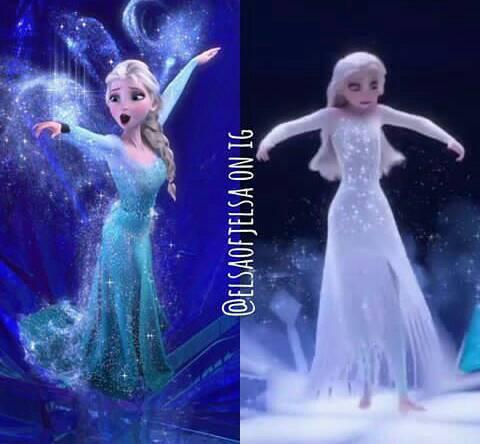
The “Show Yourself” number of Frozen 2 is the counterpoint and corrective to “Let It Go.”
Out of context, the lyric in “Show Yourself” that proclaims “You are the one you have been waiting for all of your life” seems to affirm the “expressive individualism” of “Let It Go.” In truth, it refutes it.
The “you” in “you are the one you have been waiting for all of your life” is the “you” Elsa has been meant to be “all of her life.” It is a calling (in every sense) from outside herself into service in a much larger world.
While Elsa is expecting another person like herself to at last give her validation, what is revealed to her instead is that she was always meant to find meaning in her preordained anointed role. She is to become the incarnate “fifth elemental spirit” who mediates between the four others and humanity.
At the moment of this revelation, Iduna appears, literally larger than life, smiling down at her in such a way that one expects the former queen to say, “This is my beloved daughter in whom I am well pleased.”

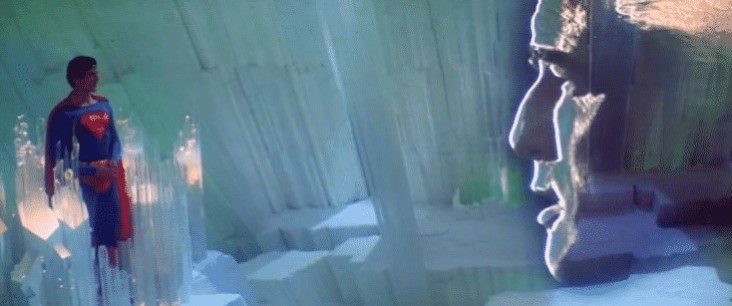
This movie’s “Elsa gets a magic gown” moment bears out this is not an affirmation of “Let It Go.” In the first movie’s centerpiece, Elsa was seeking to take control and assert herself in her sexy outfit.
But, while sexual identity is very important, it is not where ultimate identity is found. Neither is this new, angelic white gown of “Show Yourself” the result of her works. It doesn’t come from any exercise of her power this time. Rather, she is clothed by grace.
Elsa surrenders in awe and wonder as the gown forms around her body. She hasn’t lost herself but been “shown herself.” She is still the Elsa we have known and loved, but now she is also the best Elsa possible.
Her “garments become as bright as lightning” (Luke 9:29), and people from Arendelle’s history appear about her in a cinematic mount of transfiguration moment if there ever was one.

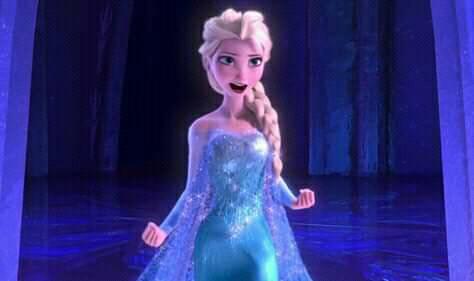
But her darkest moment is yet to come. Elsa has been warned not to go too deep, or there will be no escape from Ahtohallan. However, this is the price to both reveal, and atone for, the original sin in Arendelle.
The subterranean area of Ahtohallan is a hellish underworld, freezing as in Dante’s inner circle, which the shade of her grandfather draws her into.
Ignoring the fairy tale prohibition of her mother’s childhood lullaby, she plunges into depths too cold for even the Snow Queen. In her quest to save others, she cannot save herself. Having gone too deeply, Elsa dies.
In a brilliant call back to Anna’s redemptive death for her in the previous movie, she freezes into ice just as her sister did.
But Elsa is both human and more than human, born and endowed to bridge two worlds. So, she is capable of a final act to satisfy a higher law to which every king and queen is subject no more or no less than the lowest commoner.
She uses the last of her ice powers to send a message to her sister: Redemption for the people of the enchanted forest requires that judgement must fall on Arendelle. Grace and judgement, much as we would prefer otherwise (even Jesus in his humanity did so), are inextricably linked.
VII. “The Redeemer Heroines”: Anna
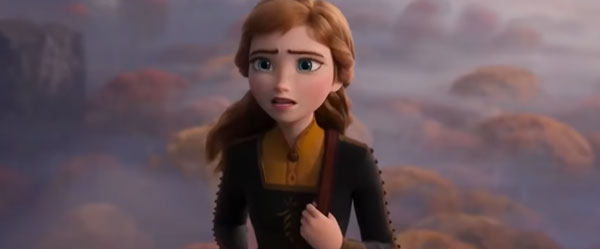
Anna receives the message…just as Olaf begins to die, flaking away, evoking the language of Genesis 3:19 : “dust you are and to dust you will return.” Because Olaf’s existence is sustained by Elsa, Anna knows she has not only lost Olaf, but her sister is now also dead.
Having deserted Kristoff while mistakenly believing he has deserted her, Anna is now all alone and death rules. This is Anna in Gethsemane. Kristen Bell’s vocal performance of “Do the Next Right Thing,” which you can hear below, conveys the agony of one whose “soul is exceedingly sorrowful, even unto death” (Matt. 26:38).
And then…she pushes ahead anyway, with nothing to gain for herself, stripped of all royal privilege, she sacrifices the only thing she has to love left in this world: her home. Now, she is ready to do the right thing just because it is the right thing and “absorb the debt” her line and her people owe for the oppression of the Northuldra.
Anna concocts a plan that will heal the Northuldra’s land while destroying Arendelle in a flood that recalls Noah’s. The “eye for an eye” justice is released, doom is imminent, bearing down, and there is literally no hope…
…but, as in all good fairy stories, especially the true ones, then there is.
VIII. “Shall We Gather At Ahtohallan?”
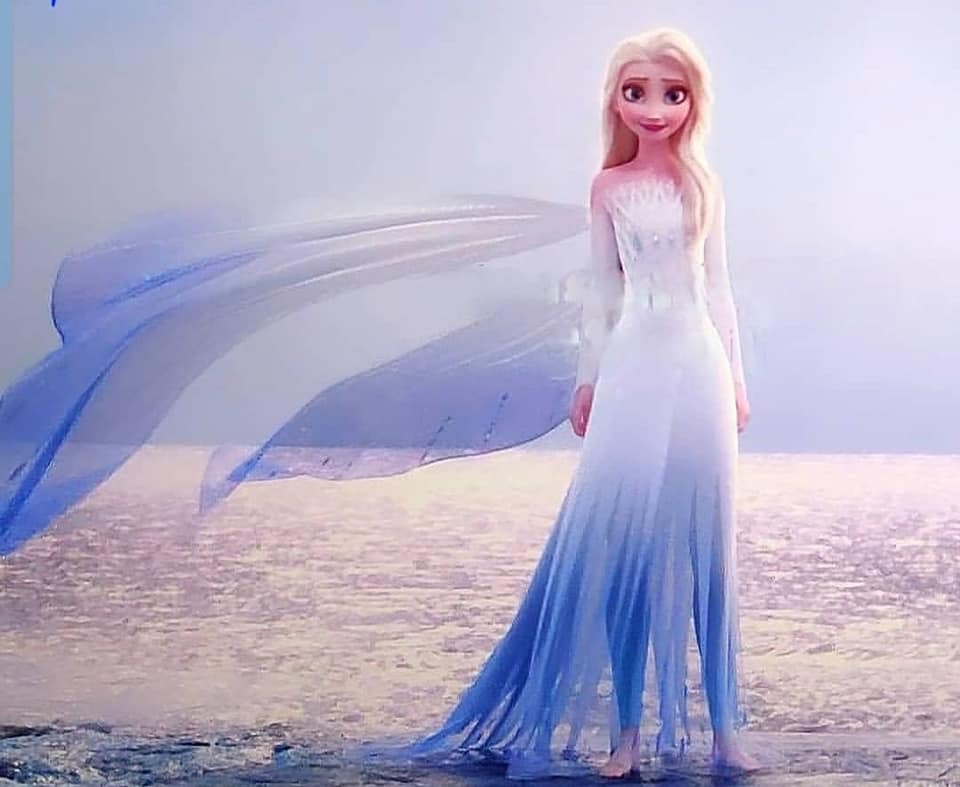
For Elsa, the seed of the woman , the new federal head of Arendelle, the uniquely chosen, has already “absorbed the debt” owed for the transgression of her forefather. Therefore, she has cancelled the need for judgement upon Arendelle.
However, Elsa’s sacrifice is incomplete and without efficacy without Anna’s, for it is Anna who willing reenacts the grace her mother showed her father. It is Anna who chooses to give up everything not just as an act of justice by also an act of mercy to those who were her enemies.
So it follows that when Anna unleashes wrath, Elsa is released from death, and is able to do what no one else ever has: she emerges from the “too deep to return” of Ahtohallan.
For the same higher justice that demands judgement cannot allow one who has innocently borne the full penalty to be continually held by Ahtohallan’s icy embrace.
The resurrected Elsa, the incarnate fifth element, is endowed with more powers than ever. She is able to outrace the released tidal wave atop her water steed and erect an ice barrier that turns back the judgement that has already fallen on her instead…
…the judgement that has already fallen on her and another.
In her new intercessory role as the fifth elemental spirit, Elsa announces that the other four have deemed that Arendelle deserves to stand with Anna because she did the right thing.
Like her sister, Anna, the agent of judgement, also suffered its penalty and satisfied moral law by offering up her own life: the life she knew and loved in Arendelle.
Make no mistake: though Elsa’s actual death was necessary to satisfy justice, Anna’s figurative loss was just just as real a sacrifice as her sister’s because from her heart she gave up everything as dead to her.
Thus Anna– also an uniquely born daughter, also uniquely positioned as the federal head of her people (Elsa having died), also an innocent — also “absorbed the debt” of her people, and her righteousness was imputed to them.
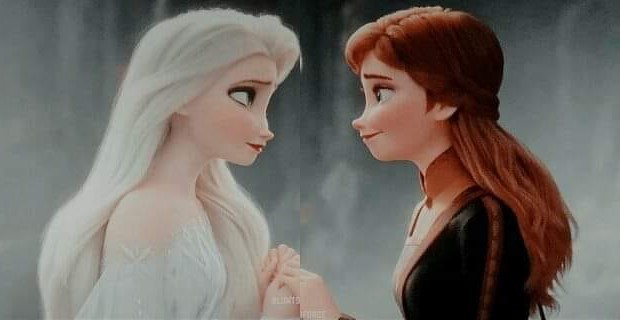
Anna receives her sister back in the most literally Biblical moment yet. Elsa has been resurrected in her flesh. She can be embraced and loved again. It is the very picture of Mary Magadalene encountering the risen Christ at the garden tomb against all hope.
And then even Olaf is resurrected, for water, we have been told, has memory. Thus, it “is he himself” (Luke 24:9) that they behold in his risen body, and he joyfully knows his friends for who they are.
Thus, as in the New Testament doctrine of the resurrected life, despite disembodiment of the personality at death, there is perfect continuity with the resurrected body (Luke 20:38).
(There is a literal gospel of Olaf in Frozen 2, by the way, but you have to sit through the end credits for it. The last six words of the movie are, “We live! We live! Good story!”
Or, as the Apostle Paul puts it: “…(O)ur Savior, Christ Jesus…has nullified death and has brought life and immortality to light through the gospel” (2 Timothy 1: 10). “Gospel” literally translates into “good story.”).
Even more…the disrupted creative order is now restored, and all of nature shares in the lifting of the curse from the sin of one man.
Recalling another passage from Paul (Romans 8) about the redemption of nature, when the cloud bank that has hemmed in the enchanted forest is dispersed, reindeer break free into the wide open spaces and run in circles for joy.
We get an aerial view of this, as though we are looking down from heaven upon nature offering its own praise to God for its liberation.
“I never knew the sky was so big,” says Ryder, one of the Northuldra who has spent his whole life hemmed in by the curse.
Neither have I ever known it. My entire life, too, has been spent hemmed in.
But the debt has been absorbed. So, someday, the fog will lift, and there will be some who do see just how big our sky truly is.
I hope I will be one of them.
I hope you will be, too.
Meanwhile, the Lord is in his sanctuary, Elsa is in Ahtohallan, everything is fine in Arendelle, and all will be right in the world.
